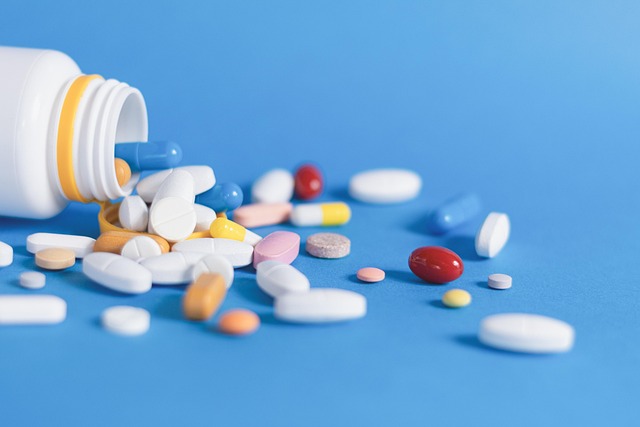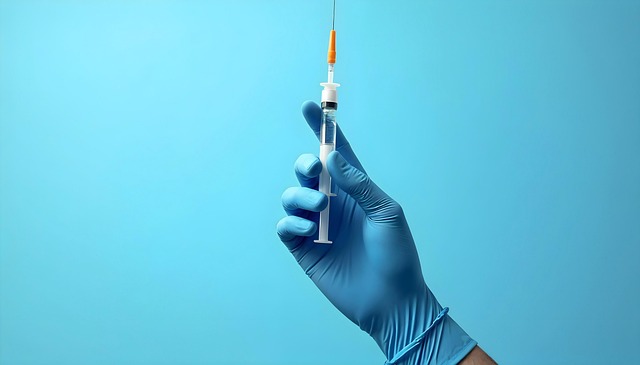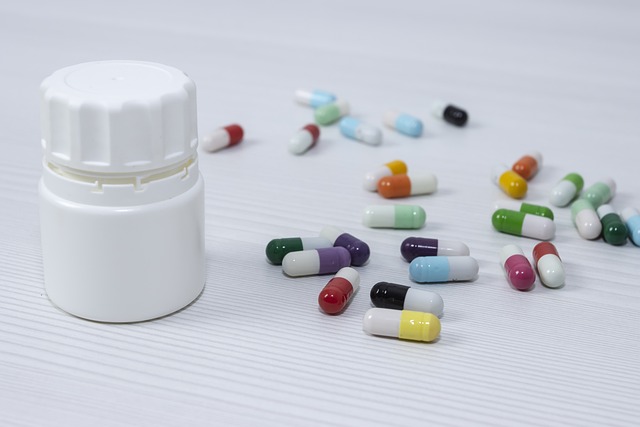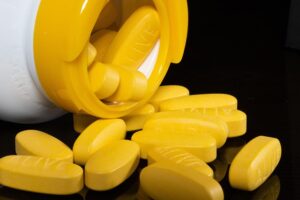GLP-1 drugs, or glucagon-like peptide-1 agonists, are a novel class of medications for type 2 diabetes management, mimicking natural hormones to stimulate insulin secretion and reduce glucagon release. They offer dual benefits in glycemic control and weight management. These versatile drugs come in various formulations with unique advantages and considerations, such as injection frequency and potential gastrointestinal side effects. Key GLP-1 drugs like exenatide and liraglutide effectively lower HbA1c levels and fasting plasma glucose, making them powerful tools for managing type 2 diabetes and supporting weight loss. Healthcare providers should consider patient needs, adherence history, cost implications, and lifestyle preferences when selecting the most suitable GLP-1 drug.
“GLP-1 agonists have emerged as a powerful tool in diabetes management, offering improved blood sugar control and weight loss. This comprehensive guide delves into the intricate world of GLP-1 drugs, exploring their role, mechanisms, and diverse formulations. We compare efficacy across inhaled, injectable, and oral options, examining their impact on glycemic control. Additionally, we analyze side effects, tolerability, and key factors guiding prescriber decisions, providing valuable insights for both healthcare professionals and those seeking effective diabetes treatments.”
Understanding GLP-1 Agonists: Their Role in Diabetes Management

GLP-1 agonists, or glucagon-like peptide-1 drugs, are a relatively new class of medications designed to mimic the effects of the natural hormone GLP-1. These drugs play a significant role in diabetes management, particularly in type 2 diabetes. By stimulating insulin secretion and reducing glucagon release, they help lower blood sugar levels in a glucose-dependent manner. This makes them an effective tool for improving glycemic control while minimizing the risk of hypoglycemia—a common side effect of other diabetes treatments.
In addition to their blood sugar-lowering effects, GLP-1 agonists have shown promise in weight management. Many of these drugs promote feelings of satiety, leading to reduced food intake and potential weight loss. This dual action not only enhances the quality of life for individuals with diabetes but also offers a more holistic approach to managing this chronic condition.
Mechanisms of Action: How GLP-1 Drugs Lower Blood Sugar

GLP-1 agonists lower blood sugar through multiple mechanisms of action, primarily targeting the gut and pancreas. When glucose is consumed, GLP-1 drugs stimulate the release of insulin from beta cells in the pancreas, facilitating the uptake of glucose by body cells, thereby reducing blood sugar levels. Additionally, these drugs slow down gastric emptying, which helps in better absorption of nutrients and prolongs feelings of fullness, leading to reduced food intake and further assistance in glycemic control.
The effects of GLP-1 drugs extend beyond insulin secretion and gastric regulation. They also enhance beta-cell proliferation and protect against their destruction, improving long-term pancreatic function. Furthermore, by inhibiting glucagon secretion from alpha cells, these medications reduce the release of a hormone that raises blood sugar levels, contributing to overall glycemic homeostasis.
Types of GLP-1 Agonists: Inhaled, Injectable, and Oral Formulations

GLP-1 agonists, or glucagon-like peptide-1 drugs, are a class of medications designed to mimic the effects of the natural hormone GLP-1. These drugs play a significant role in managing type 2 diabetes by improving blood sugar control and promoting weight loss. Among them, different types of formulations exist, each with its own merits: Inhaled GLP-1 agonists offer a novel administration route, providing convenience and potentially greater patient adherence due to their ease of use. However, they may be limited by potential respiratory side effects and variable absorption rates.
Injectable GLP-1 drugs, on the other hand, have been the traditional choice for many years. They ensure consistent delivery and often offer more precise dosing. Common examples include once-daily or twice-weekly injections. While effective, these formulations might face challenges related to user compliance due to the need for frequent injections. Oral formulations represent another significant advancement in GLP-1 drug delivery. These medications are easily administered, eliminating the need for injections or inhalers. Yet, they often require multiple daily doses and may experience varying levels of absorption and consistency compared to injected forms.
Efficacy Comparison: Analyzing Blood Sugar Control

When comparing the efficacy of different GLP-1 agonists, one of the primary metrics to consider is blood sugar control. These medications are primarily designed to enhance insulin secretion and suppress glucagon release in a glucose-dependent manner, leading to improved glycemic management in individuals with type 2 diabetes. Clinical trials have shown that various GLP-1 drugs exhibit consistent efficacy in reducing HbA1c levels, which is a key marker of long-term blood sugar control.
Among the GLP-1 agonists, exenatide and liraglutide stand out for their superior ability to lower blood glucose concentrations compared to other analogues. Studies have demonstrated that these drugs can achieve rapid and sustained reductions in fasting plasma glucose levels, leading to improved overall glycemic control. This enhanced efficacy is particularly beneficial for patients who struggle to maintain stable blood sugar levels through lifestyle changes and conventional medications alone.
Side Effects and Tolerability: A Comprehensive Review

GLP-1 agonists, while generally well-tolerated, can cause certain side effects that are important to consider. These drugs, designed to mimic the effects of the natural hormone GLP-1, play a significant role in managing type 2 diabetes and weight management. Common adverse reactions include nausea, vomiting, diarrhea, abdominal pain, and constipation—often more pronounced when starting treatment. These gastrointestinal symptoms typically subside over time.
The tolerability of GLP-1 drugs is a key factor in their success as therapeutic agents. Comparatively, they tend to have a better side effect profile than other antidiabetic medications, especially sulfonylureas and insulin. However, individual reactions can vary, and healthcare providers should monitor patients for any signs or symptoms that might indicate an adverse response. Regular follow-ups allow for prompt intervention if needed, ensuring the best possible outcomes for those using GLP-1 drugs.
Choosing the Right GLP-1 Drug: Factors Influencing Prescriber Decisions

When prescribers select a GLP-1 drug, several factors come into play, ensuring the choice aligns with individual patient needs and preferences. Key considerations include the specific indications for use, such as type 2 diabetes management or weight loss support. Each GLP-1 agonist has unique characteristics; for instance, some may offer advantages in terms of administration (e.g., injection frequency) or side effect profiles.
Patient factors like adherence to treatment regimens and individual responses to previous medications influence decisions too. Cost implications and insurance coverage also play a role, as do patient preferences regarding injection devices and the potential for lifestyle-related benefits. A holistic understanding of these variables enables healthcare providers to make informed choices, optimising treatment outcomes with the most suitable GLP-1 drug.
